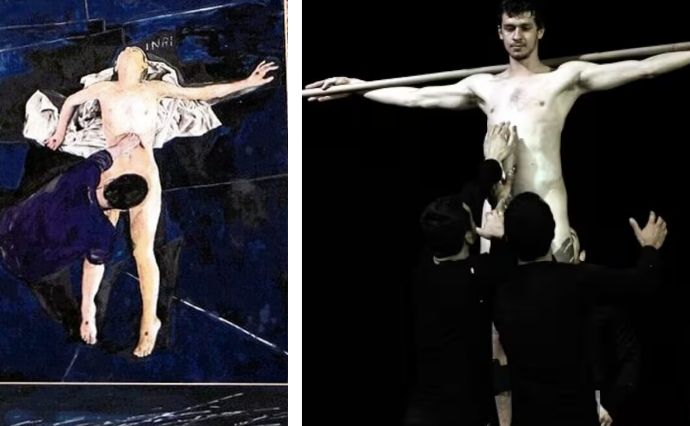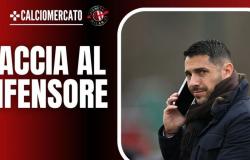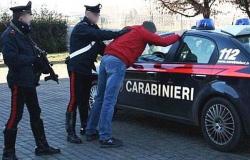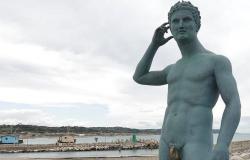As well as irreverent, the controversial exhibition Gratia Plena of Carpi is also the result of copying. If it had not closed early on April 18th, it would have been appropriate to write: “Any reference to other people’s works is to be considered purely coincidental”, many times some visitor had been struck by the incredible similarity between some of Andrea Saltini’s works and as many scenes from Greek artist and choreographer Dimitris Papaioannou. An obvious “inspiration” but no mention of which is made either in the presentation of the exhibition or in all the explanations given so far by the artist and the diocesan curators. The public who, despite everything, trusted the interpretation given by the bishop and his collaborators and therefore convinced that they were faced with an original artistic path, was therefore shamefully deceived as is clear from the clear overlap that emerges from the comparison between the respective works.
The lawyer Francesco Fontana noticed itpresident of Justice in truth, which in a statement published yesterday, 19 April, explains: «Having made the appropriate checks, in the absence of obvious citations or references which in these cases must be indicated when presenting any “new” work when inspiration is taken from other authors, the paintings by Mr. Saltini appear largely incredibly comparable, frighteningly similar or superimposable, almost a reproduction of the works of the Greek choreographer Dimitris Papaioannou, known as curator of the opening and closing ceremonies of the Athens Olympics in 2004″.
The inspiration may be there, the revisitation too, but it should be declared. Instead, the choreographer’s name does not appear at all in the catalog or even in the page of the diocese of Carpi dedicated to the exhibition, where the artist speaks, correctly, of a “contemporary remake of Caravaggio” in relation to the Crucifixion of Saint Peterbut says nothing about the analogous “remaking” of Papaioannou’s scenes, for example in the opera Fisher of men (ascension of Saint Peter) – and let’s leave aside the inconsistency between theAscension Day (which means to ascend, to rise, and it does not appear that Saint Peter ascended) and a figure who instead lies on the ground, in the water (as explained by Saltini: «Peter deposed who returns also has a sort of origin according to the scriptures that is fisher of men. Placed in the water”). In a scene of Ink (2020) by Papaioannou appears a man in a loincloth lying in the water incredibly similar to Saltini’s “ascended”/reclining Saint Peter. The images speak for themselves.
 “Greek” inspiration also for Paracletewhere an astronaut (who for Saltini represents precisely «the Paraclete, the one who truly helps and defends men in history») supports a half-naked man, who again takes up close, very close a scene from Papaioannou, this time from The Great Tamer (2017). The titled painting is taken from the same show …I won’t believe it, a very free reinterpretation of the apostle Thomas’ disbelief, where a man opens his shirt with both hands showing his chest with a round, shiny pendant in the center. Just like in a similar scene in The Great Tamer.
“Greek” inspiration also for Paracletewhere an astronaut (who for Saltini represents precisely «the Paraclete, the one who truly helps and defends men in history») supports a half-naked man, who again takes up close, very close a scene from Papaioannou, this time from The Great Tamer (2017). The titled painting is taken from the same show …I won’t believe it, a very free reinterpretation of the apostle Thomas’ disbelief, where a man opens his shirt with both hands showing his chest with a round, shiny pendant in the center. Just like in a similar scene in The Great Tamer.
 The best known and most discussed work of the Carpi exhibition is INRI (San Longino), also for the damage suffered on March 28th by a still unknown attacker (whereas, it is worth remembering, the “common” people reacted with rosaries and peaceful protests). The artist specifies that «the piece was conceived and developed horizontally (as depicted in the catalogue)», favoring «a point of view from above», however, «in the design/installation phase (site specific) the author decided to install the work on a slope by adding the second work known as “earth”». Happy choice, since, placed vertically, the resemblance between Saltini’s Longinus and Papaioannou’s “longinus” is even more evident, also in a dark sweater and similar pose in another scene of The Great Tamer.
The best known and most discussed work of the Carpi exhibition is INRI (San Longino), also for the damage suffered on March 28th by a still unknown attacker (whereas, it is worth remembering, the “common” people reacted with rosaries and peaceful protests). The artist specifies that «the piece was conceived and developed horizontally (as depicted in the catalogue)», favoring «a point of view from above», however, «in the design/installation phase (site specific) the author decided to install the work on a slope by adding the second work known as “earth”». Happy choice, since, placed vertically, the resemblance between Saltini’s Longinus and Papaioannou’s “longinus” is even more evident, also in a dark sweater and similar pose in another scene of The Great Tamer.

We might as well learn more about the “raw material” or the poetics of Dimitris Papaioannou, to better benefit from this “true contemporary art with religious subjects”, “a rarity”, as the vicar Don Carlo Bellini defines it. And it is Papaioannou himself, interviewed on The Guardian, to say that his «It is not dance, it is not theatre, and it is not performance. I don’t know what the hell it is”, and that his language is “sci-fi horror” (his words: “I realized that sci-fi horror was the language I was speaking: there was a lot in common with Alien, a of my favorite films”). But Don Bellini hadn’t told us that Saltini “explicitly refers to a religious narrative and a theology that is not just alluded to” and that his “spiritual content arises from a tradition that is thus updated, questioned, provoked and ultimately made alive and interesting today”? And instead, assuming or not granting that the spiritual content exists, it seems to arise from a completely different source that has nothing to do with the sacred.
The diocese of Carpi kept us in the dark about such an important “ingredient” in the exhibition while making every effort to make us understand the works exhibited in Gratia Plena. So many words and not even a mention of Papaioannou’s choreography? Or maybe they didn’t know either? «How is it possible that the creators and organizers of the Carpi exhibition», asks the lawyer Fontana in the statement cited at the beginning, «did not have the foresight to carry out – first – the necessary checks, and that these data have gone unnoticed in the exhibition catalogue, which presents the works asserting the “…distinctive trait of his poetics”, because “..Saltini abstracts, and abstracts from the truth…”, and therefore his creations are “.. .imbued with spirituality..”, “…true contemporary art with a religious subject, once again a rarity”, even “…renewing the iconographic heritage and affective heritage of our cultural tradition”?”. If this were the case, Fontana recognizes at least «one culpa in vigilando of those who know and must carry out such checks”.
All that remains is to send the accusation of “disrespectful judgments (or prejudices) back to the sender, that is, to the diocese itself” move from the beginning to those who were disconcerted by the free use of sacred characters. It is paradoxical that in this matter certain pastors have shown “disrespectful judgments (or prejudices)” towards many Catholics who felt their religious feelings offended, in order to defend to the bitter end (see the press release relating to the closure) ” an attempt, partly pioneering, to identify possible interactions between contemporary artistic experiences and religious paths and mystical research”, which doesn’t seem so pioneering after all.
Tags: blasphemous Carpi exhibition sensational scam










